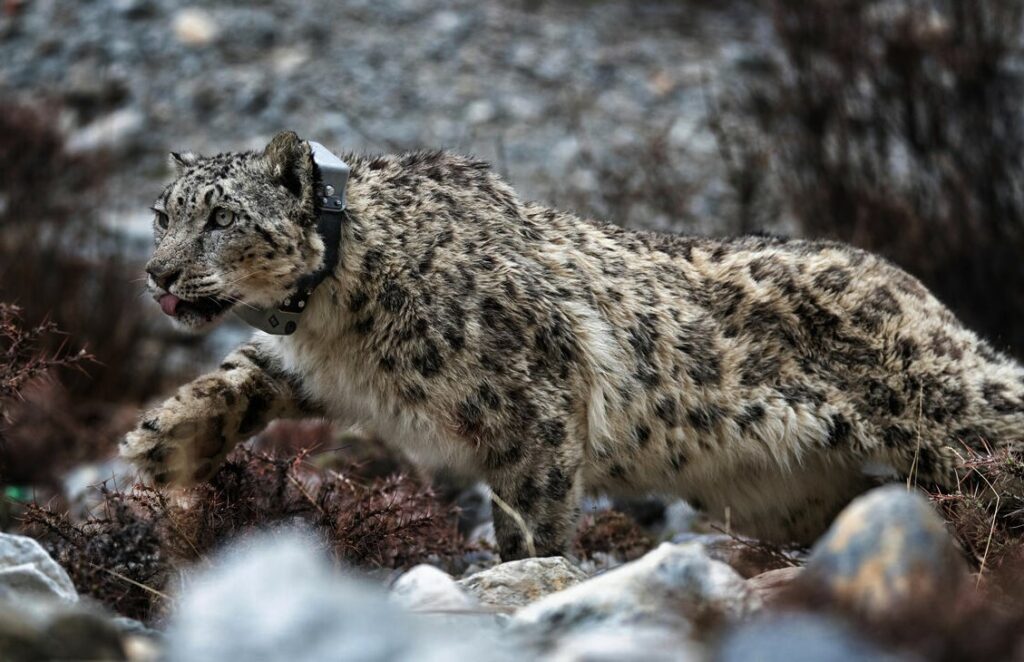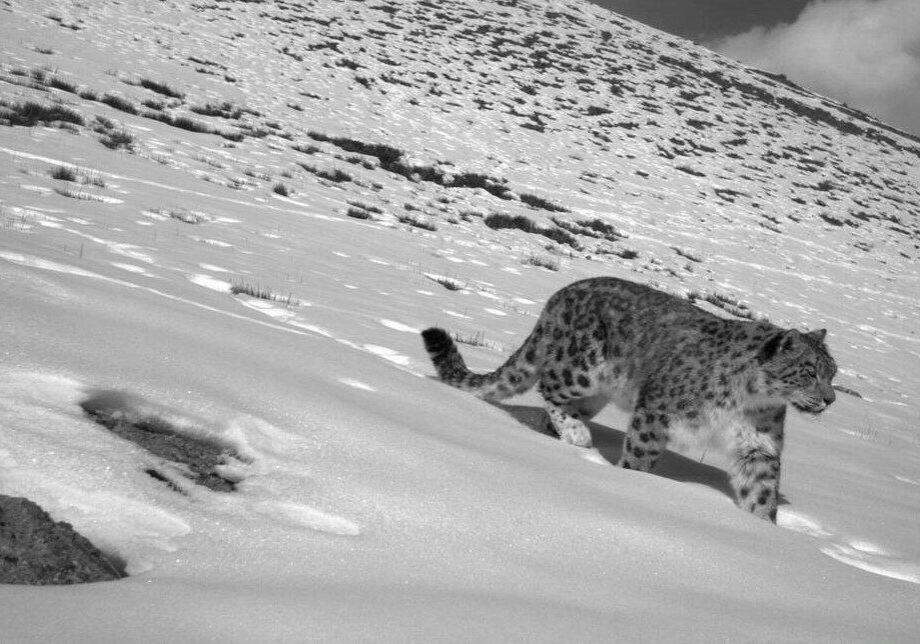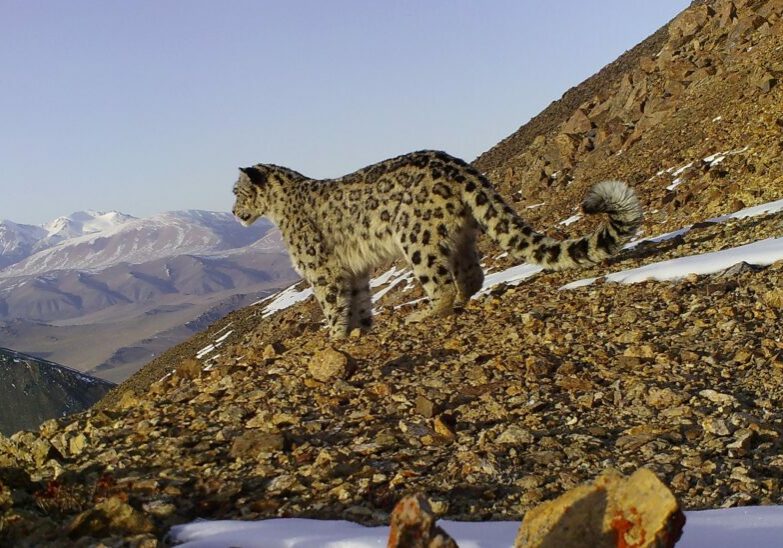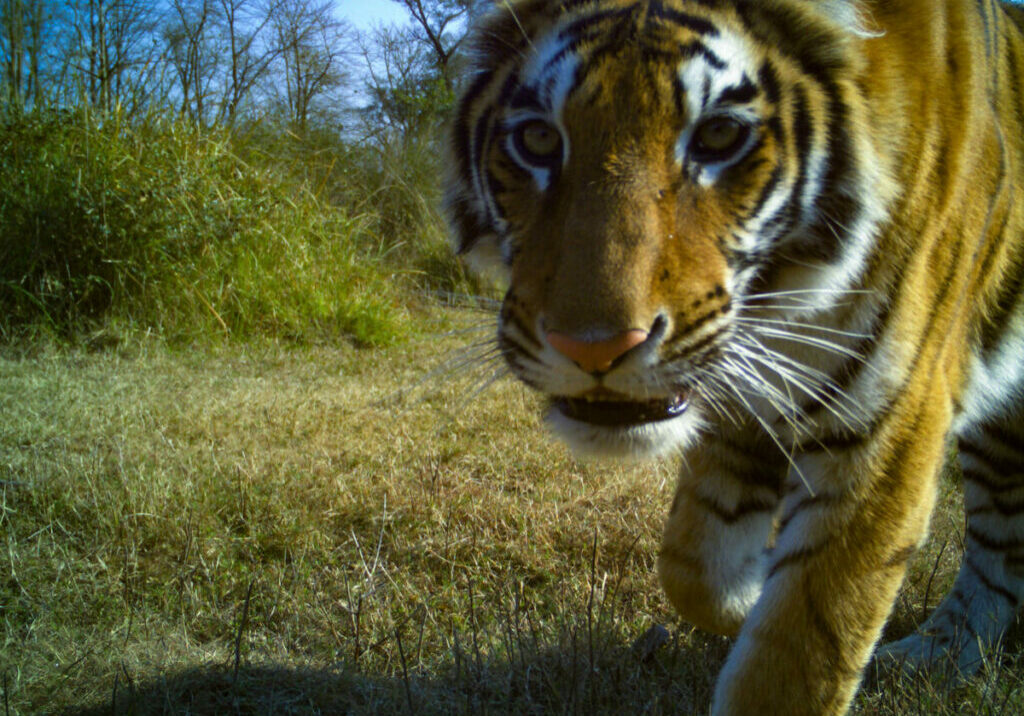High in the Himalayas, Shey Phoksundo National Park is prime habitat for snow leopards. It’s the largest protected area in Nepal, and people from local communities nearby often encounter these elusive cats while herding their livestock or on the trails around their settlements.
In May 2021, we successfully collared two adult male snow leopards, aged six and seven, in the park. The GPS data transmitted by the collars will enable us to learn more about their movements so we can better protect them.
National park staff and conservationists will closely monitor the cats over the next 18 months. The GPS collars periodically transmit each animal’s location, providing invaluable information on their movements and behaviour.
This will help us to better manage the landscape and to reduce conflicts between snow leopards and people from local communities. Climate change increases the risk of conflict as snow leopard habitat and their prey is reduced.
“The science derived from collaring expeditions such as these is critical in strengthening conservation and management in the Western Himalayan Snow Leopard Landscape, a region known to have the highest snow leopard density in Nepal,” says Dr Pem Narayan Kandel, secretary of Nepal’s Ministry of Forests and Environment.

© DNPWC / WWF-NEPAL
Our colleagues from WWF-Nepal joined a team of 30, including national park staff, vets, wildlife experts and citizen scientists. Your support provided vital funding for the expedition.
Involving people from local communities in snow leopard research and monitoring is at the heart of our work – and we couldn’t do it without you. WWF supporters in the UK, including our wonderful snow leopard adopters, have provided community-based snow leopard conservation committees with vital equipment and technical capacity.
You’ve helped supply important research equipment such as cameras, binoculars, GPS devices and laptops, as well as tents, sleeping bags and mattresses for when teams are out on patrol in the mountains.
The satellite collaring expedition was successfully managed by the local snow leopard conservation committee. Rather than hiring a private trekking company, the expedition used local enterprises for transport, logistics and other services.
That means the funds have stayed within the community, ensuring that they benefit from snow leopard conservation work. This is particularly important at the moment, since communities around Shey Phoksundo National Park and elsewhere in Nepal have been hit hard by the loss of tourism revenue due to Covid-19.
“Despite the pandemic, these efforts showcase the commitment of the government and local communities to protecting snow leopards during one of the most challenging times of our lives,” says Dr Ghana S Gurung, country representative at WWF-Nepal. “We’ll continue to work to ensure that snow leopards and people in the Himalayas can thrive together.”
Adopt a snow leopard
You can do more to help us protect these magnificent big cats by adopting a snow leopard.
More to explore

Notes from the field: Himalayas
A glimpse of a snow leopard is a rare delight, but the mountains are always alive with their presence, says scientist Rishi Kumar Sharma

